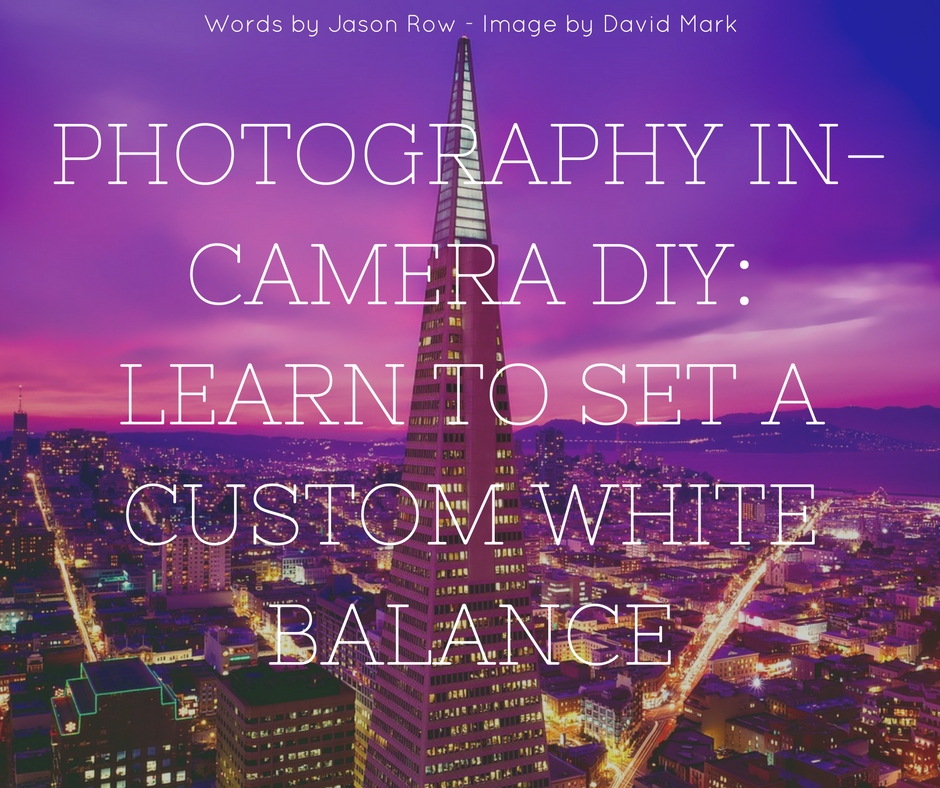
Why Set A Custom White Balance?
White balance is something we often don’t think about. The reason for that is simple, our cameras, as a rule, are very good at setting it correctly.
However, like other aspects of our cameras automatic systems, exposure and focus for example, white balance is not infallible, nor is the correct white balance always the best option.
Understanding how to set a custom white balance is an important part of the photographic process in the digital era and today we are going to look at why and how you should set it.
[url=https://flic.kr/p/eP2exg][img]https://c2.staticflickr.com/4/3809/9064753953_f298dd0133_z.jpg[/img][/url]
Sometimes sunsets do not always look they way you expect. By Susanne Nilsson
Firstly, Take White Balance Off Auto
Like measuring exposure, our cameras have a standard from which they create the correct white balance. The color sensor measures the temperature of the light being reflected back to it.
However, it doesn't always get that correct. If there is a predominance of one color, the sensor will tend to over correct for that color.
Two classic examples of this are:
- When shooting a spectacular red/golden sunset, the camera tries to neutralise the redness and makes colors look less saturated and more “daylight”
- The second is when shooting flash and your subject has a brightly colored outfit on. If this outfit was red, for example, the white balance will over-compensate to the point of making the image look very cyan blue.
There are many other examples like this, most of them caused when there is an abundance of one color. To counter this we have three main options:
- Set a white balance preset,
- Set a manual white balance,
- Shoot RAW.
White Balance Presets
Your camera will have a number of presets for color balance. These will include:
- Daylight, a setting for color temperatures around 5500k,
- Shade or Cloudy this setting deals with the blue end of the color spectrum, 6500K plus,
- Cloudy and deep shade tend to give a very blue light.
- Flash deals with light that is 10,000k and above, the light from a flashgun being very blue indeed.
- Going the other way, Fluorescent tries to correct the green/reddish light from that type of lighting, whilst Tungsten deals with the warmest part of the color spectrum down around 2500k.
If your AWB is not giving you great results then you can use one of these presets to suit the light. You can also use them to modify a different color of light.
For example, above we talked about how sunsets tend to get neutralised by auto white balance. You will often get a much better result by using a preset aimed towards the blue end of the spectrum.
This is because the sensor is expecting bluer light and will not correct out the golden red light of the sunset.
[url=https://flic.kr/p/hRb6PB][img]https://c6.staticflickr.com/6/5523/11058187293_1a10fc9cf2_z.jpg[/img][/url]
Choosing a preset gives you more control over white balance. By Robert Pittman
Manual White Balance
Creating Your Custom White Balance
Another way to develop your custom white balance is to use manual white balance. All modern camera have this available and it is carried out by pointing your camera towards the subject, then placing a piece of pure white paper or card in front of the lens.
Depending on your camera, the manual white balance setup will be either using buttons or more likely through the menu system. Because the white card does not have an abundance of any one color, it is giving a pure representation of the color of the light falling on the subject.
This can give you a highly accurate indication of the white balance.
[url=https://flic.kr/p/8vEXpw][img]https://c1.staticflickr.com/5/4077/4930276400_c4025c038a_z.jpg[/img][/url]
When the light is not changing you can set a manual white balance. By U.S. Army
Shooting RAW
Many people advocate shooting RAW files as the solution to white balance issues. They are partially correct. RAW files do not apply any white balance to the image file. You carry out that in post production.
When you pull up the RAW image on your computer screen it applies the white balance that was set at the time of shooting and embedded into the JPEG preview file.
This is good as it enables you to change that white balance to something more suitable and gives you greater control. There is however a problem, if you shoot auto white balance, you will have to rely on your memory as to how the light color really was.
The embedded JPEG may well be wrong. A better option is to shoot RAW files but to continue to set your white balance either through presets or manually.
This will give you a better start point to work with in post production and give you a greater understanding of the nuances or the color of light.
[url=https://flic.kr/p/rCiDNA][img]https://c3.staticflickr.com/8/7648/16819757130_6e94b0f0d6_z.jpg[/img][/url]
Shoot RAW and manipulate white balance in post. By Jason Row Photography.
Summary
Setting your custom white balance either manually or through presets is an important thing to understand. Like exposure and focus, the more we can control the images we are taking, the more creative we can be.
Now that you've downloaded your free Sunset Photography Cheat Sheet, we've also got a great step by step video series – “Amazing Sunset Photography”. This will include:
- Tips to instantly improve your photos,
- What equipment to take along
- Best location to choose & what to look for plus loads more…
Further Resources
- A Beginner’s Guide to White Balance by Jason Row
- How the Preset Options on Your Camera’s Mode Dial Affect the Settings by Dzvonko Petrovski
- Practical Tips to Better Understand Color Control in Post Production by Jason Row




